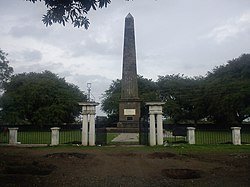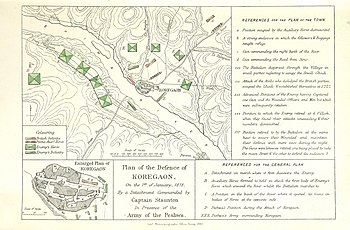
The Maratha Empire also referred to as the Maratha Confederacy was an early modern Indian empire and later a confederation that controlled large portions of the Indian Subcontinent in the 18th century. Maratha rule formally began in 1674 with the coronation of Shivaji of the Bhonsle dynasty as the Chhatrapati. Although Shivaji came from the Maratha caste, the Maratha empire also included warriors, administrators, and other nobles from the Maratha and several other castes from what is known today as Maharashtra. The Maratha Kingdom was expanded into a full-fledged Empire in the 18th Century under the leadership of Peshwa Bajirao I.
The Maratha caste is composed of 96 clans, originally formed in the earlier centuries from the amalgamation of families from the peasant (Kunbi), shepherd (Dhangar), blacksmith (Lohar), carpenter (Sutar), Bhandari, Thakar and Koli castes in Maharashtra. Many of them took to military service in the 16th century for the Deccan sultanates or the Mughals. Later in the 17th and 18th centuries, they served in the armies of the Maratha Empire, founded by Shivaji, a Maratha Kunbi by caste. Many Marathas were granted hereditary fiefs by the Sultanates, and Mughals for their service.
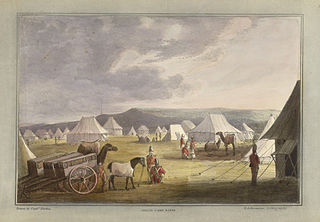
The Third Anglo-Maratha War (1817–1819) was the final and decisive conflict between the British East India Company and the Maratha Empire in India. The war left the Company in control of most of India. It began with an invasion of Maratha territory by British East India Company troops, and although the British were outnumbered, the Maratha army was decimated. The troops were led by Governor General Hastings, supported by a force under General Thomas Hislop. Operations began against the Pindaris, a band of Muslim mercenaries and Marathas from central India.

The First Anglo-Maratha War (1775–1782) was the first of three Anglo-Maratha Wars fought between the British East India Company and Maratha Confederacy in India. The war began with the Treaty of Surat and ended with the Treaty of Salbai. The war, fought in between Surat and Poona, saw British defeat and restoration of positions of both the parties before the war. Warren Hastings, the first Governor-General of Bengal decided not to attack Pune directly.
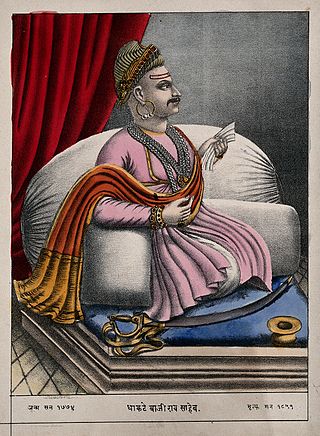
Baji Rao II was the 13th and the last Peshwa of the Maratha Confederacy. He governed from 1795 to 1818. He was installed as a puppet ruler by the Maratha nobles, whose growing power prompted him to flee his capital Poona and sign the Treaty of Bassein (1802) with the British. This resulted in the Second Anglo-Maratha War (1803–1805), in which the British emerged victorious and re-installed him as the titular Peshwa. In 1817, Baji Rao II joined the Third Anglo-Maratha War against the British, after they favoured the Gaekwad nobles in a revenue-sharing dispute. After suffering several battle defeats, the Peshwa surrendered to the British, and agreed to retire in return for an estate at Bithoor and an annual pension.
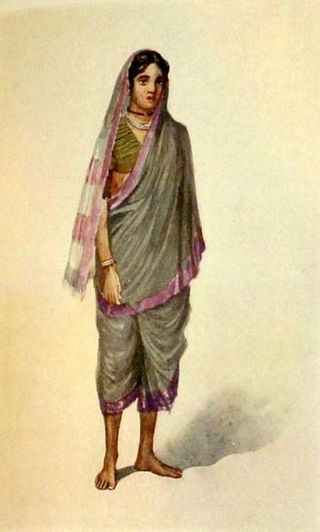
Mahar is an Indian caste found largely in the state of Maharashtra and neighbouring areas. Most of the Mahar community followed Bharatratna Dr. B. R. Ambedkar in converting to Buddhism in the middle of the 20th century. There are still some Mahars who practice Hinduism.

The Mahar Regiment is an infantry regiment of the Indian Army. Although it was originally intended to be a regiment consisting of troops from the Mahar community of Maharashtra, today the Mahar Regiment is composed of different communities from mainly states like Maharashtra, Gujarat, Madhya Pradesh, Uttar Pradesh, and Bihar.

Pune district is a district in Western Maharashtra with Administrative Headquarters in Pune city. Pune district is the most populous district in the Indian state of Maharashtra. It is one of the most industrialised districts in India.
Shirur is an administrative subdivision of the Pune district in the Indian state of Maharashtra. It is located on the eastern boundary of the district, on the banks of the Ghod River. The town is also called Ghodnadi to distinguish it from other locations that have the same name. Ghodnadi in Marathi Language means Ghod River.

The Battle of Khadki, also known as or the Battle of Ganeshkhind and Battle of Kirkee took place at modern day Khadki, India, on 5 November 1817 between the forces of the British East India Company and the Maratha Empire under the leadership of Appasaheb Bhonsle. Company forces achieved a decisive victory, with Khadki later becoming a military cantonment under British rule.

Sitabuldi Fort, site of the Battle of Sitabuldi in 1817, is located atop a hillock in central Nagpur, Maharashtra, India. The fort was built by the British after they won this area following the battle of Sitabuldi. After winning the battles of Sitaburdi, Sakkardara and Nagpur Richard Jenkins allowed Mudhoji II Senasaheb Subha to continue to rule to Nagpur and entered into a treaty with him on 6th January 1818 which wasratified later by Governor General. The article 7 of the treaty stated ‘The two hills of Seetabuldee with the bazaars and land adjoining, to a distance to be hereafter specified, shall be henceforth included in the British boundary, and such Military works erected as may be deemed necessary.’ By this treaty the British occupied the Sitaburdi hills and large areas on all four sides. However no major construction work was erected on it for next two years. The area surrounding the hillock, now known as Sitabuldi, is an important commercial hub for Nagpur. To the south is Nagpur Railway Station and behind it is Tekdi Ganapati, a temple of Ganesha. The fort was a home to the Indian Army's 118th infantry battalion Grenadiers till 2019.
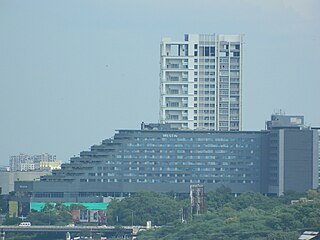
Koregaon Park is an area located in Pune, in the state of Maharashtra in India. It is primarily a residential area with lush greenery, but of late has been growing into a commercial hub as well. Koregaon Park also has a trendy dining and nightlife hub, with sleek European and Indian restaurants, plus live music bars and buzzy pubs. It is also a destination for art and music enthusiasts in the city with many art galleries and clubs in the vicinity. Koregaon Park is located about 5.8 kilometres (3.6 mi) from the Pune International Airport and about 3.8 kilometres (2.4 mi) from the Pune Junction railway station.
Koregaon Bhima is a panchayat village and census town in the state of Maharashtra, India, on the left (north) bank of the Bhima River. Administratively, Koregaon Bhima is under Shirur Taluka of Pune District in Maharashtra. There is only the single town of Koregaon Bhima in the Koregaon Bhima gram panchayat. The town of Koregaon Bhima is 10 km along the SH 60 motorway southwest of the village of Shikrapur, and 28 km by road northeast of the city of Pune. It is the site of the Battle of Koregaon fought on 1 January 1818.
Amrut Rao was a Maratha noble, and the adopted son of Peshwa Raghunath Rao, who is also known as the First Maharaja of Karwi. In 1803, Yashwant Rao Holkar invaded his master's residence in Pune to resettle his dispute with Sindhiya, while Peshwa was out of city. Subsequently, Holkar set up an ad hoc council nominally headed by Amrut Rao, to punish Sindhiya and reassert his claims on Malwa. However, Baji Rao sought assistance from the British East India Company, whose advance forced Amrut Rao to flee Pune and make peace with Baji Rao Subsequently, Amrut Rao signed a treaty with the British, agreeing to give up all claims over the Peshwa's office in return for a pension and an estate in Peshwa Jagir of Bundelkhand.
Gopal Baba Walangkar, also known as Gopal Krishna, is an early example of an activist working to release the untouchable people of India from their historic socio-economic oppression, and is generally considered to be the pioneer of that movement. He developed a racial theory to explain the oppression and also published the monthly journal Vital-Vidhvansak, targeted at the Brahmanical Orthodoxy.
The 2018 Bhima Koregaon violence refers to violence during an annual celebratory gathering on 1 January 2018 at Bhima Koregaon to mark the 200th anniversary of the Battle of Bhima Koregaon. The violence and stone pelting by a crowd at the gathering resulted in the death of a 28-year old youth and injuries to five others. The annual celebration, also called Elgar Parishad convention, was organised by retired justices B. G. Kolse Patil and P. B. Sawant. Justice Sawant stated that the term "Elgar" meant loud invitation or loud declaration.
Sidhnak Mahar Inamdar, also known as Sidhnak Mahar, was an Indian soldier of the Mahar Regiment. He belonged to the Mahar caste. He is popularly known for the Battle of Koregaon.
The Elgaar Parishad was an event held on 31 December 2017 to commemorate the two hundredth anniversary of the Battle of Koregaon Bhima. It was organised by a coalition of 260 non-profit organisations at Pune's Shaniwar Wada Fort, and had approximately 35,000 people in attendance. The program consisted of a number of cultural performances, speeches and slogans.
The Battle of Bhima Koregaon: An Unending Journey is a 2017 documentary by Indian filmmaker Somnath Waghmare. It explored the role of 500 Mahar dalit soldiers of the East India Company in the Battle of Koregaon on 1 January 1818 against Peshwa rulers. It talks about dalit assertion on 1 January taking place every year. The 50 minute documentary was released in April 2017.

Somnath Waghmare is an Indian documentary filmmaker based in the state of Maharashtra. His most prominent and most recent film, Battle of Bhima Koregaon, was critically received and screened in India and abroad. Till now, all his films have been documentary films and they have dealt with various social issues like the persecution of women and Dalit assertion in Maharashtra. He made his directorial debut with the short documentary feature I Am Not a Witch (2017). His upcoming films are Chaityabhoomi and Gail and Bharat.
